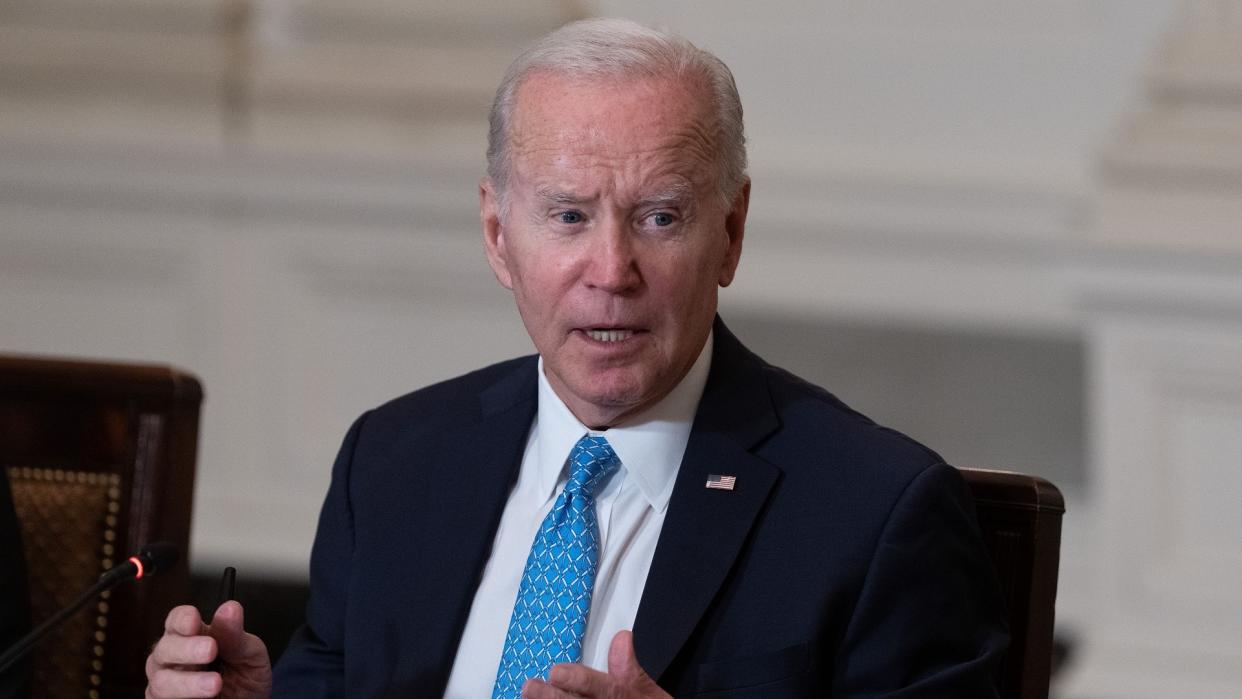Biden’s $400 Billion Student Loan Forgiveness Plan Could Impact Inflation — How It Compares to Other Government Spending

- Oops!Something went wrong.Please try again later.
There is now an official government price tag on the Biden administration’s federal student loan forgiveness plan: $400 billion. That’s how much the Congressional Budget Office estimates the plan will cost, the agency said on Monday. Whether that figure will have a significant impact on inflation is open to debate.
See Our List: 100 Most Influential Money Experts
Find: 9 Bills You Should Never Put on Autopay
The CBO based its number on the total amount of federal student loan debt in the United States. According to its estimates, as of June 30, 43 million borrowers held $1.6 trillion in federal student loans, Reuters reported. The CBO projects that roughly $430 billion of that debt will be canceled, although some of the funds canceled by the Biden plan likely would have been forgiven anyway.
The CBO’s figures differ slightly from previous Biden administration estimates, mainly because they were based on different time frames. As Reuters noted, in August the White House projected that cancelled student loan repayments would equal $24 billion a year, or about $240 billion over a decade. That number assumes that 75% of eligible borrowers apply.
In a Monday tweet, White House Chief of Staff Ron Klain noted that the CBO’s estimate is based on a 30-year score, when “most often, CBO estimates a program’s cost over its first TEN years.” He added that the CBO estimate puts the first-year cost at $21 billion.
The CBO estimate is in line with an August estimate by the National Taxpayers Union, a fiscally conservative taxpayer advocacy organization, Forbes reported. The group estimated that the forgiveness program would cost an average of about $2,500 per taxpayer, with taxpayers earning less than $100,000 a year shouldering a smaller burden.
To put the CBO estimate in context, the student loan program’s cost equals nearly half of what the U.S. government budgets for military spending every year, Forbes reported, and about 7.5% of total federal spending this fiscal year.
Critics were quick to lash out following the CBO news — not just at the potential tax impact, but also at the potential impact on inflation, which is already running at its highest level in more than four decades.
As Forbes noted, Rep. Mariannette Miller-Meeks (R-Iowa) tweeted that “President Biden isn’t forgiving student loans — he’s charging hardworking Americans $400 billion.”
In August, the nonprofit Committee for a Responsible Federal Budget, which advocates a balanced budget, claimed that the student debt forgiveness plan would “wipe out the disinflationary benefits of the Inflation Reduction Act,” CNBC reported. That assertion was based on the CRFB’s then-estimate that the Biden plan would cost $400 billion to $600 billion.
But others have downplayed the impact. As CNBC noted, economists at the left-leaning Roosevelt Institute said that any inflationary effect of the loan forgiveness plan would be “small” and offset by the resumption of student loan payments on Jan. 1, 2023.
Similar views were expressed by the Center for American Progress, which said the impact on inflation would be “minor,” and Moody’s Chief Economist Mark Zandi, who said the effect on inflation is “largely a wash.”
Take Our Poll: Do You Tip for Service?
Expecting Student Loan Forgiveness? 3 Ways To Plan Ahead Before Applying
Prior to this week’s CBO estimate, Zandi projected that student debt forgiveness starting at $10,000 would increase inflation by 0.08% as measured by the consumer price index. At the same time, he estimated that CPI inflation would be reduced by 0.11% after the payment freeze ends, since borrowers will have to start paying off the remainder of their loans.
More From GOBankingRates
This article originally appeared on GOBankingRates.com: Biden’s $400 Billion Student Loan Forgiveness Plan Could Impact Inflation — How It Compares to Other Government Spending
